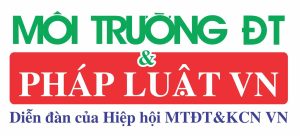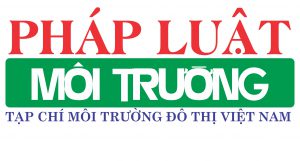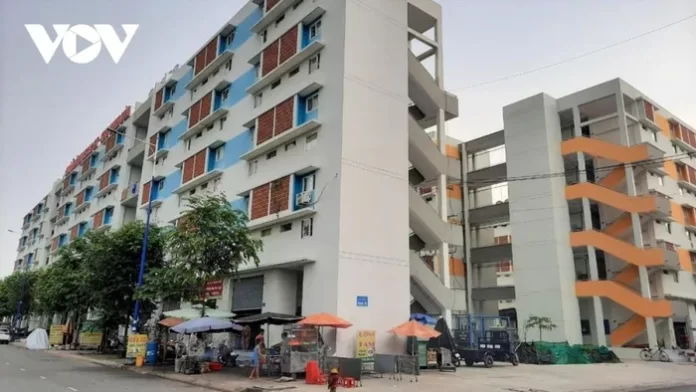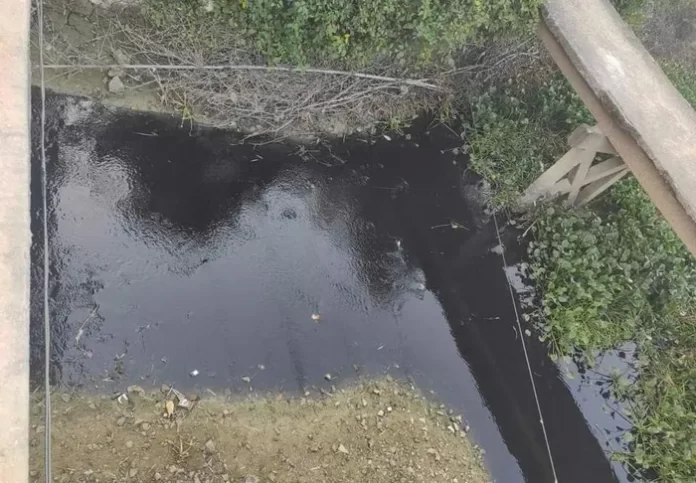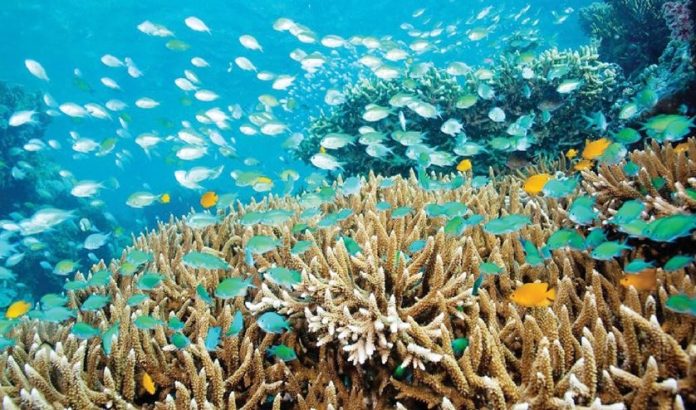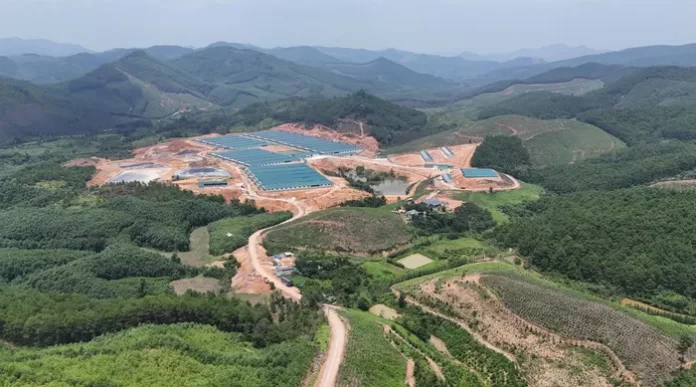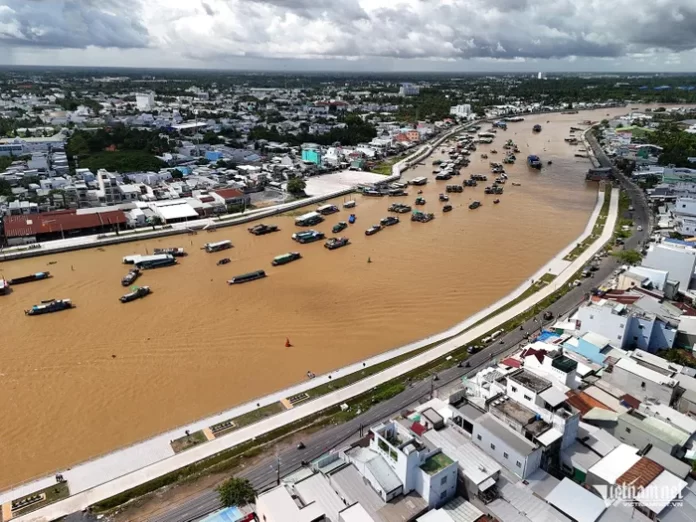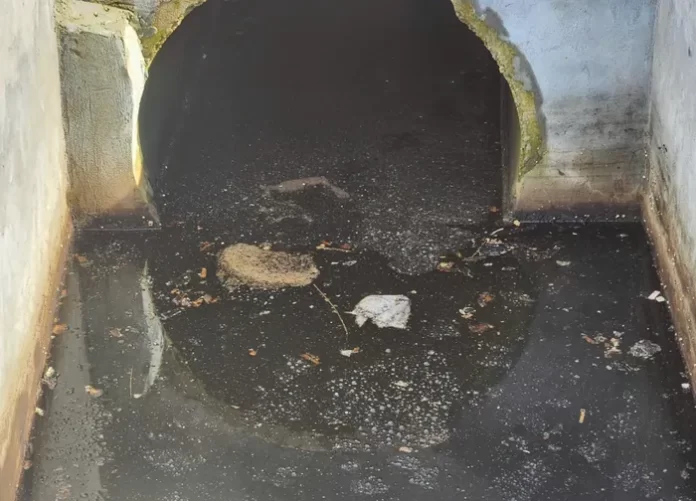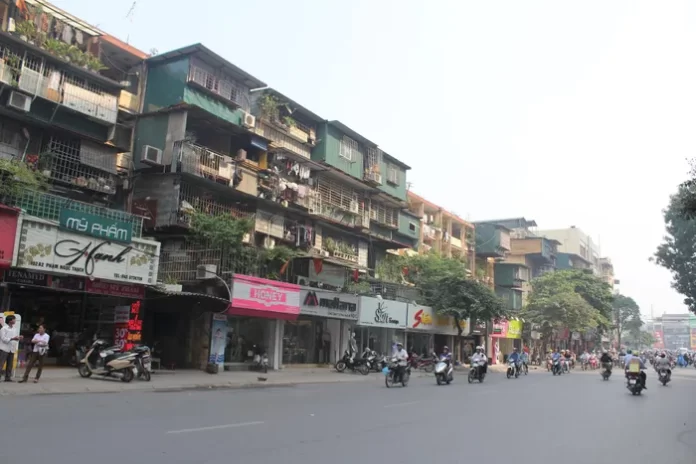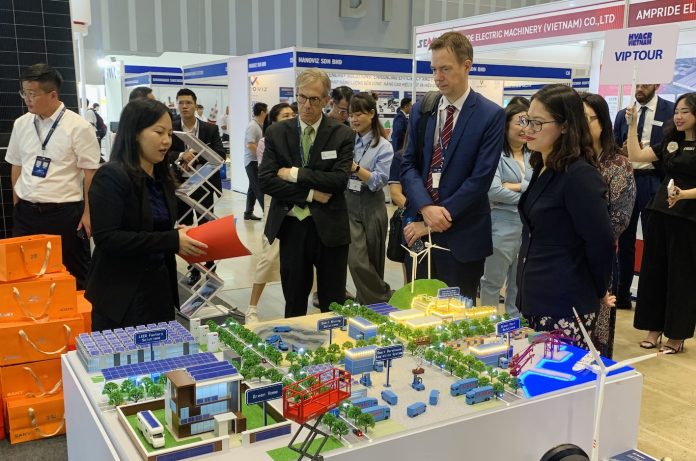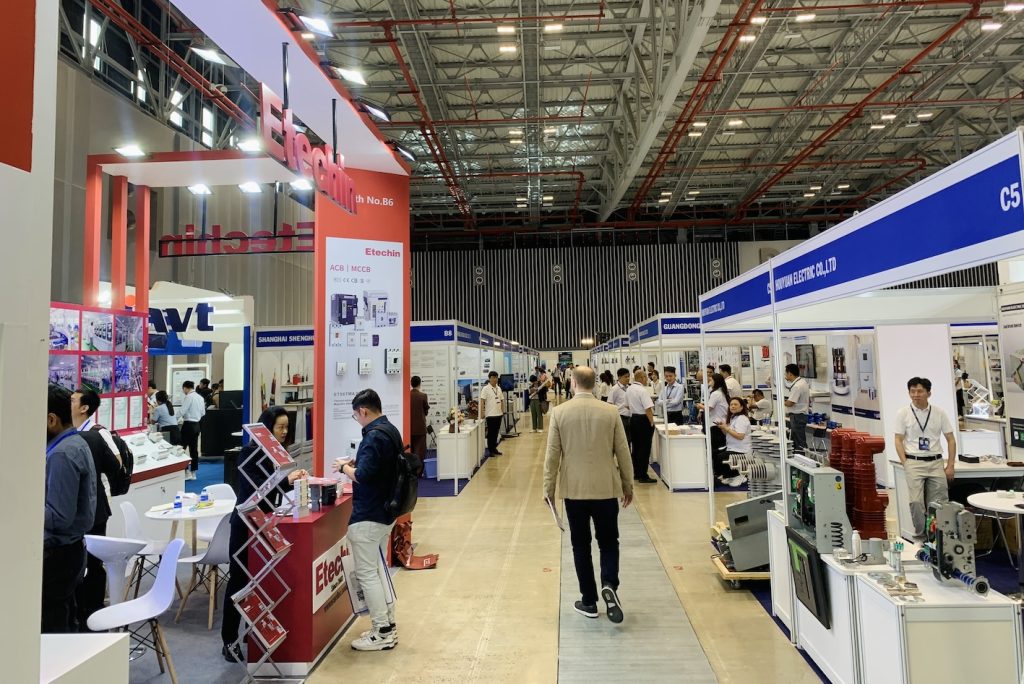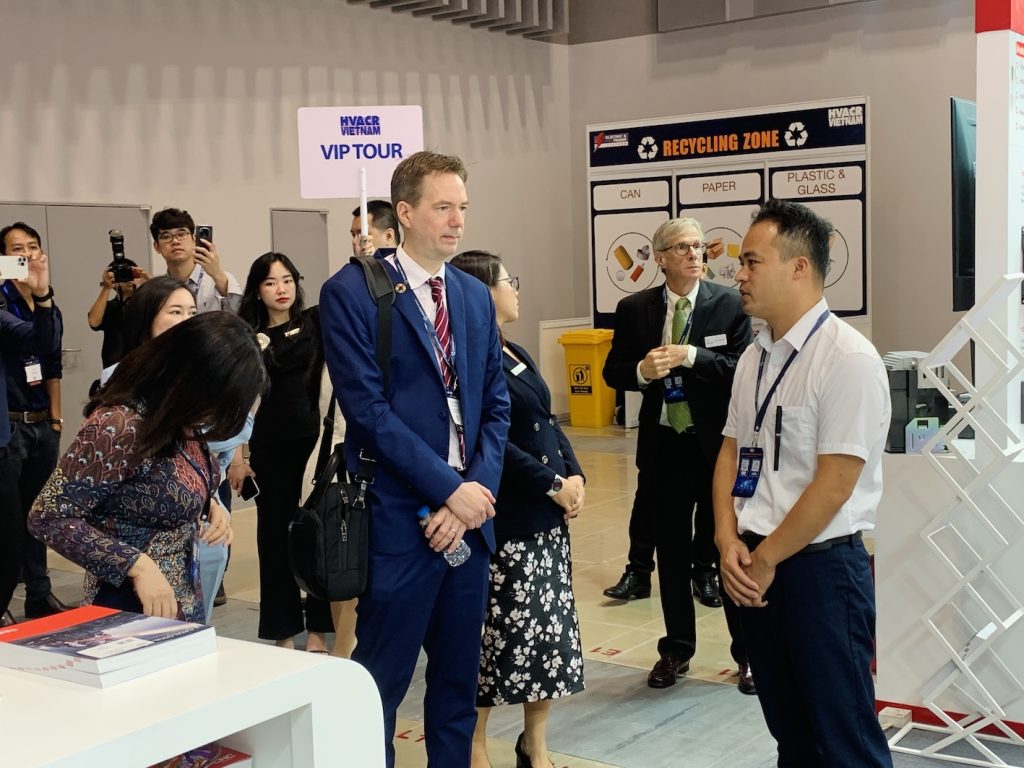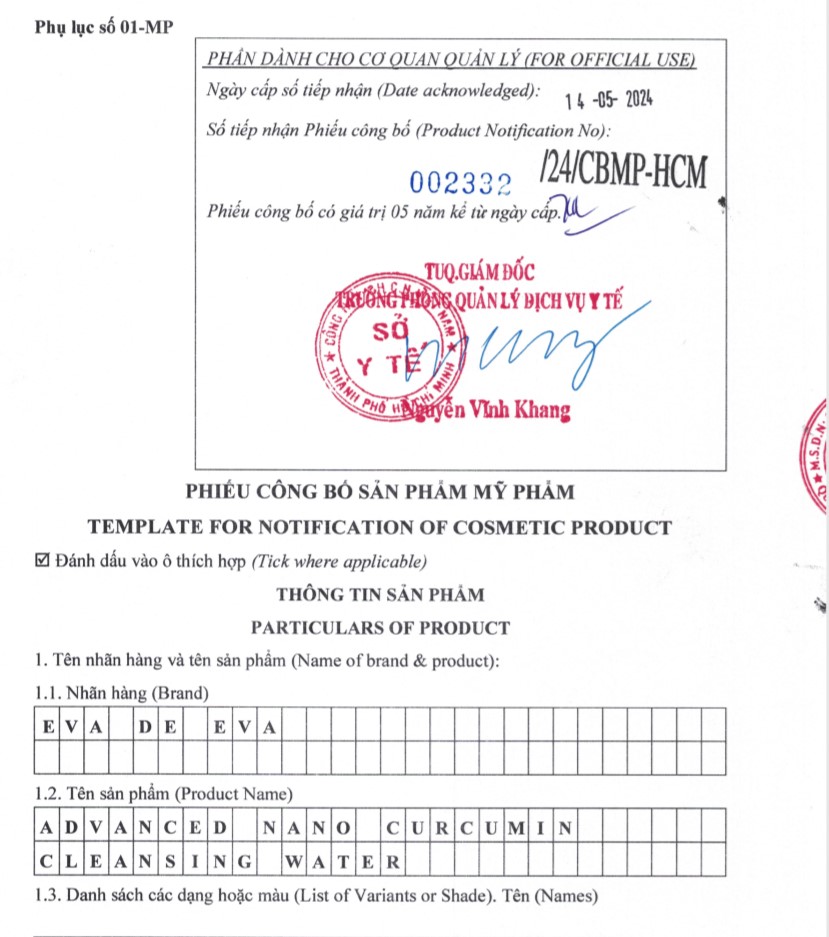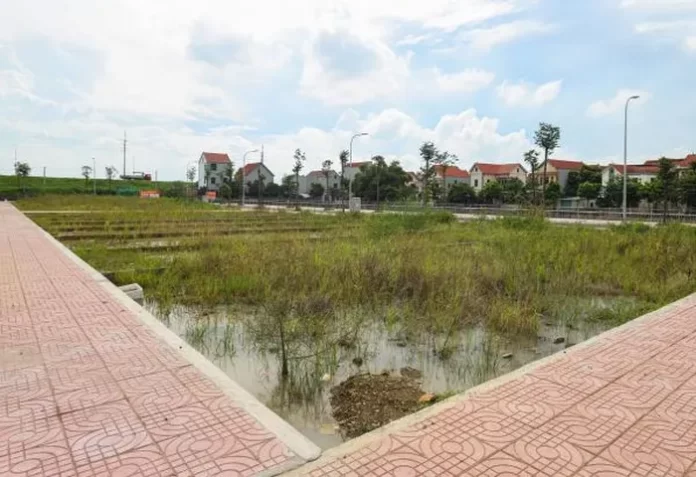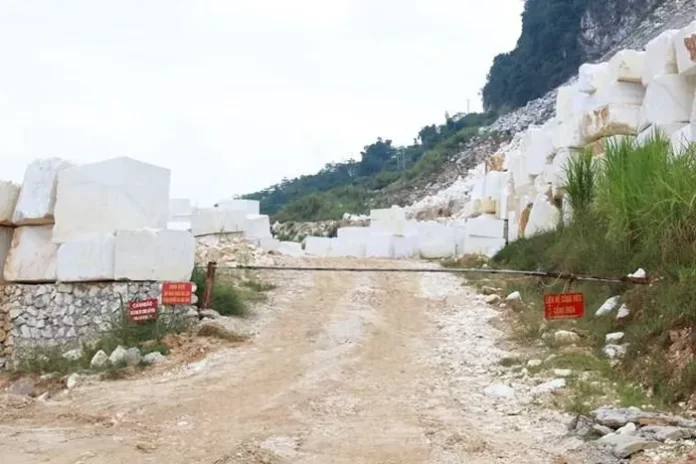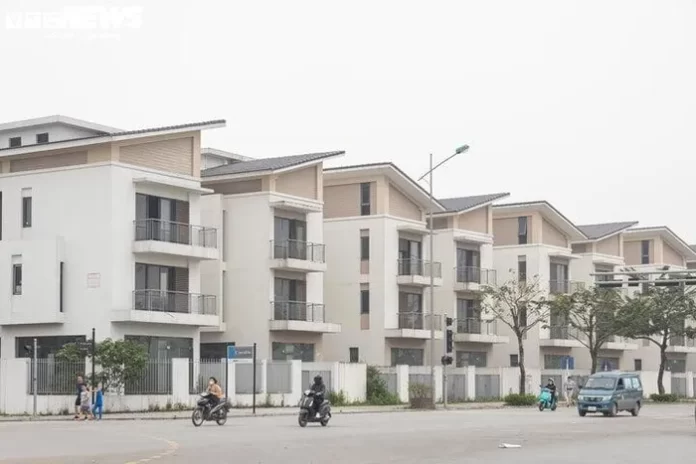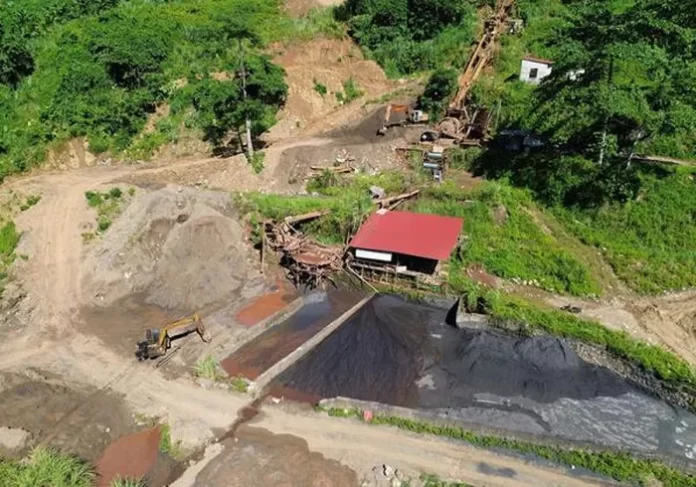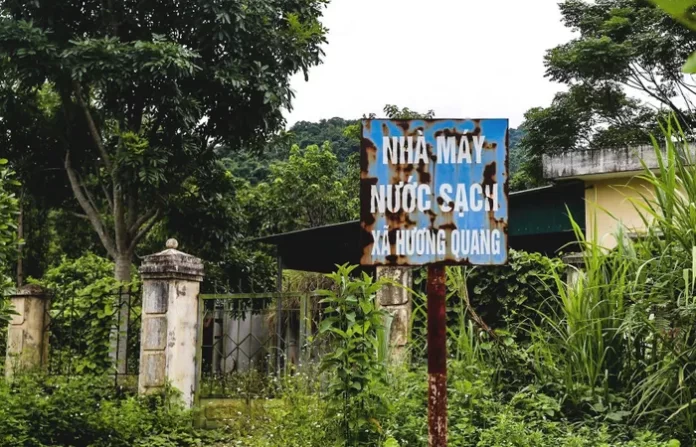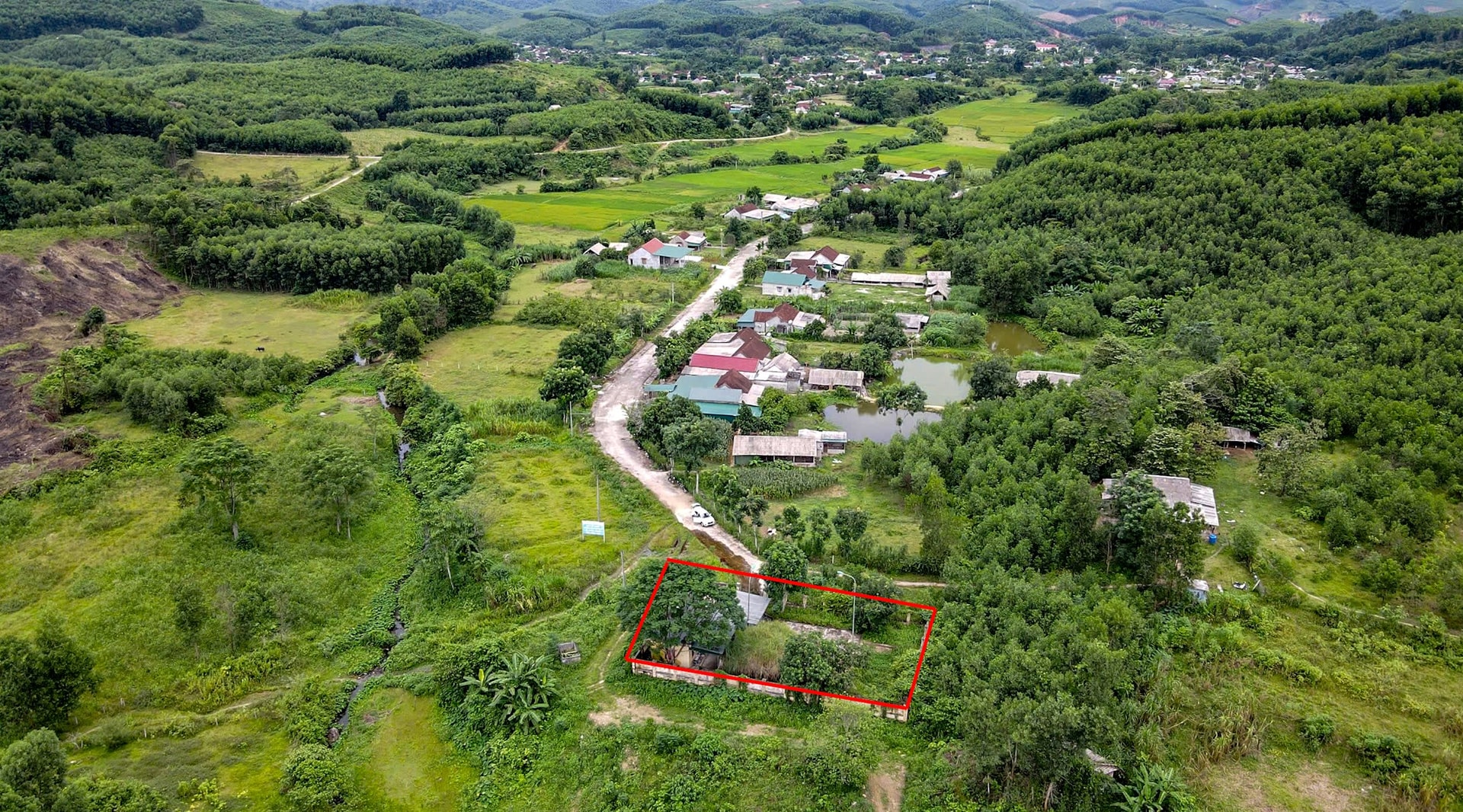Ban biên tập Chuyên trang Quản lý Môi trường, Tạp chí Môi trường và Đô thị Việt Nam trân trọng giới thiệu tới quý độc giả Công bố quốc tế lĩnh vực môi trường số 33-2024.
Về quản lý môi trường
– Biến động không gian của các nguồn ô nhiễm trong hai chiến dịch lấy mẫu (2012–2013 và 2018–2019) tại mười địa điểm ở lưu vực Los Angeles.
– Khả năng phục hồi lâu dài trong quản lý nước thải: Tối ưu hóa phân bổ nước thải đã xử lý bằng phương pháp tiếp cận đa tác nhân động.
– Từ bit đến xanh: Giải mã ảnh hưởng của nền kinh tế kỹ thuật số đến hiệu quả sử dụng tài nguyên thiên nhiên.
– Đánh giá hệ thống phân bổ nguồn PM2.5 theo thời gian thực mới và ý nghĩa của nó đối với quá trình lão hóa nhanh của khí thải xe cộ.
– Hydro xanh so với amoniac xanh: Một phương pháp tiếp cận tích hợp theo thời gian dựa trên tối ưu hóa phân cấp để phân tích kinh tế kỹ thuật so sánh về chuỗi cung ứng quốc tế.
– Nghiên cứu tác động của quản lý hoạt động xanh đến hiệu suất phát triển bền vững của các công ty sản xuất và dịch vụ: Vai trò trung gian của việc tích hợp khách hàng xanh tại Việt Nam.
– Các giải pháp chính sách để giải quyết tình trạng rò rỉ carbon: Thông tin chi tiết từ phân tích hồi quy siêu dữ liệu.
– Con đường hướng đến quá trình khử cacbon ở Úc. Một phương pháp tiếp cận sóng Morlet.
– Đánh giá một quy trình thay thế để sản xuất hydrocarbon từ CO2: Phân tích kinh tế kỹ thuật và môi trường.
Về môi trường đô thị
– Định lượng tác động của khí thải nhân tạo và tác động môi trường nước đến sự biến đổi thủy ngân trong trầm tích ở một dòng sông đô thị điển hình.
– Một phương pháp trí tuệ nhân tạo mới dựa trên học máy để dự đoán chỉ số ô nhiễm không khí PM2.5.
– Tiếp xúc với môi trường đô thị, các hành vi liên quan đến cân bằng năng lượng và sự kết hợp của chúng ở trẻ mẫu giáo từ ba quốc gia châu Âu.
– Kết hợp thông tin không gian không đồng nhất vào phương pháp tối ưu hóa đa mục tiêu của cơ sở hạ tầng xanh.
– Hướng tới quá trình ra quyết định sáng suốt: Một nghiên cứu thống kê toàn diện về các mô hình kinh tế và tài chính cho quá trình chuyển đổi năng lượng bền vững trong môi trường đô thị.
– Tác động của địa hình đô thị tự nhiên đến môi trường gió dành cho người đi bộ trong khu phố: Một nghiên cứu CFD với cả kịch bản gió và lực đẩy.
– Đặc tính, khả năng tái chế và tầm quan trọng của bao bì nhựa trong chất thải rắn đô thị hỗn hợp để đạt được các mục tiêu tái chế ở một thành phố Thụy Điển.
– Đánh giá tổng hợp về các mô hình phân tán bioaerosol và nguy cơ lây nhiễm trong môi trường đô thị điển hình: Ý nghĩa đối với quản lý an ninh sinh học đô thị.
– Cấu trúc không gian đa trung tâm, nền kinh tế kỹ thuật số và phát triển bền vững xanh đô thị.
Về môi trường khu công nghiệp
– Công nghiệp 4.0 và sản xuất sạch hơn: Đánh giá toàn diện về sản xuất thông minh và bền vững cho các ngành công nghiệp sản xuất sử dụng nhiều năng lượng.
– Làm việc theo chuỗi giá trị cho các chuyển đổi nền kinh tế tuần hoàn trong ngành dệt may thời trang: Một khuôn khổ có sự tham gia.
– Thuế so với quy định: Động lực của các nhà gây ô nhiễm để nới lỏng các mục tiêu phát thải của ngành.
– Sự thoái hóa metathesis của cao su tự nhiên thải để tái sử dụng tiềm năng.
– Thực tiễn kinh tế tuần hoàn như một lá chắn cho khả năng phục hồi tổ chức và mạng lưới lâu dài trong khủng hoảng: Thông tin chi tiết từ sự cộng sinh công nghiệp.
– Tiếp xúc với ô nhiễm không khí tại nhà và tỷ lệ mắc bệnh bạch cầu ở khu công nghiệp Viadana, Bắc Ý.
– Tái chế tro bay khí hóa than làm chất thay thế xi măng làm sạch: Hiệu suất, cấu trúc vi mô và đánh giá tính bền vững của xi măng hỗn hợp.
– Vai trò của công nghệ công nghiệp 4.0 và tương tác giữa người và máy để giảm thiểu carbon trong chuỗi cung ứng thực phẩm.
– Nhu cầu về hydro và điện của ngành công nghiệp chế biến trong một nước Đức trung hòa khí hậu sẽ như thế nào?.
CHUYÊN TRANG QUẢN LÝ MÔI TRƯỜNG
Tạp chí Môi trường và Đô thị Việt Nam
Xin trân trọng giới thiệu!
ENVIRONMENTAL MANAGEMENT / QUẢN LÝ MÔI TRƯỜNG
1. Spatial variability of pollution source contributions during two (2012–2013 and 2018–2019) sampling campaigns at ten sites in Los Angeles basin
Environmental Pollution, Volume 354, 1 August 2024, 124244
Abstract
This study assessed the spatial variability of PM2.5 source contributions across ten sites located in the South Coast Air Basin, California. Eight pollution sources and their contributions were obtained using positive matrix factorization (PMF) from the PM2.5 compositional data collected during the two sampling campaigns (2012/13 and 2018/19) of the Multiple Air Toxics Exposure Study (MATES). The identified sources were “gasoline vehicles”, “aged sea salt”, “biomass burning”, “secondary nitrate”, “secondary sulfate”, “diesel vehicles”, “soil/road dust” and “OP-rich”. Among them, “gasoline vehicle” was the largest contributor to the PM2.5 mass. The spatial distributions of source contributions to PM2.5 at the sites were characterized by the Pearson correlation coefficients as well as coefficients of determination and divergence.
The highest spatial variability was found for the contributions from the “OP-rich” source in both MATES campaigns suggesting varying influences of the wildfires in the Los Angeles Basin. Alternatively, the smallest spatial variabilities were observed for the contributions of the “secondary sulfate” and “aged sea salt” sources resolved for the MATES campaign in 2012/13. The “soil/road dust” contributions of the sites from the 2018/19 campaign were also highly correlated. Compared to the other sites, the source contribution patterns observed for Inland Valley and Rubidoux were the most diverse from the others likely due to their remote locations from the other sites, the major urban area, and the Pacific Ocean.
2. Long-term resilience in wastewater management: Optimizing treated wastewater allocation with a dynamic multi-agent approach
Journal of Environmental Management, Volume 365, August 2024, 121527
Abstract
Water scarcity poses a significant challenge to sustainable development, necessitating innovative approaches to manage limited resources efficiently. Effective water resource management involves not just the conservation and distribution of freshwater supplies but also the strategic reuse of treated wastewater (TWW). This study proposes a novel approach for the optimal allocation of treated wastewater among three key sectors (user agents): agriculture, industry, and urban green space. Recognizing the intricate interplays among these sectors, System Dynamics (SD) and Agent-Based Modeling (ABM) were integrated in a Complex Adaptive System (CAS) to capture the interactions and feedback mechanisms inherent within treated wastewater allocation systems.
The Non-dominated Sorting Genetic Algorithm II (NSGA-II) serves as the optimization tool, enabling the identification of optimal allocation strategies across various management scenarios over a 25-year simulation period. Our research navigates the complexities of long-term resource management, accounting for each sector’s evolving its objectives and guidelines along the whole system objectives and strategies. The outcomes demonstrate how treated wastewater can be effectively distributed to support economic and social equity –as the system objectives-while supporting agricultural and industrial growth and enhancing efficiency and social well-being –reflecting individual agent objectives-within the CAS framework.
The research explores four distinct management scenarios, each prioritizing different sectors to address water resource management challenges. Notably, all four scenarios align with the strategies required by the ruler (government), providing strategic guidance to water resource managers for decision-making. The simulation results reveal a scenario where all sectors’ demands are met, with Scenario 4 emerging as the most effective. Scenario 4 aligned with the objectives and guidelines of each sector, demonstrating significant improvements in the CY (Agriculture agent index; increased from 0.2 to 0.68), IGI (Industry agent index; increased from 1 to 1.63), and GAI (Urban Green Space agent index; increased from 1 to 1.23) indices over the 25-year simulation period. By providing a strategic blueprint for policymakers and stakeholders, this study contributes significantly to the discourse on sustainable water resource management, presenting a replicable model for similar contexts globally, where judicious allocation of treated wastewater is paramount for achieving harmony between human activity and ecological preservation.
3. Can PM2.5 concentration reduced by China’s environmental protection tax?
Science of The Total Environment, Volume 937, 10 August 2024, 173499
Abstract
The responsibility of enhancing environmental quality is shouldered by China’s Environmental Protection Tax (EPT), which constitutes a vital element of China’s tax system greening initiative. Using the difference-in-differences (DID) method, the effects of the EPT on PM2.5 concentration were empirically examined in this study, through panel data of 218 cities in China from 2015 to 2021. The results indicate that the EPT can effectively reduce PM2.5 concentration by approximately 2.4 %, and this conclusion remained unchanged after a series of robustness tests. In the channel analysis, it can be found that the reduction of PM2.5 concentration by the EPT was achieved through the alleviation of financing constraints, technological advancements, and optimization of industrial structure. Heterogeneity analysis indicates that the negative impact of the EPT on PM2.5 concentration was more significant in northern cities, inland cities and non-national environmental protection model cities. Further analysis found that EPT has a stronger inhibitory effect on PM2.5 concentration within 100 % of tax increase. The conclusions remain consistent when spatial spillover effects of PM2.5 are taken into account. This paper provides important empirical evidence to support the effectiveness of emission reductions of EPT and provides valuable insights for the future improvement of EPT.
4. From bits to green: Unraveling the digital economy’s influence on natural resource efficiency
Journal of Environmental Management, Volume 365, August 2024, 121203
Abstract
This study explores the impact of the digital economy (DE) on natural resource efficiency (NRE) across 275 Chinese cities between 2011 and 2021. Through a comprehensive empirical analysis, we find that the DE significantly positively affects NRE. A key moderating factor in this relationship is green technological innovation (GTI), focusing on the quality rather than the quantity of green technology. Our study also uncovers regional variations of moderating effect. Additionally, we identify several mechanisms through which the DE contributes to enhanced NRE, including the transformation of industrial structure and improvements in green total factor productivity. A detailed heterogeneity analysis shows that the DE’s impact on NRE varies according to city-specific factors such as natural resource endowment, city size, environmental regulations, and administrative levels. These findings provide a more nuanced understanding of how the DE influences NRE at the urban level, contributing to the broader discourse on sustainable development in the digital age. Our research offers policy recommendations and potential pathways for cities to leverage the DE for greater natural resource efficiency.
5. Evaluation of a new real-time source apportionment system of PM2.5 and its implication on rapid aging of vehicle exhaust
Science of The Total Environment, Volume 937, 10 August 2024, 173449
Abstract
Accurate identification and rapid analysis of PM2.5 sources and formation mechanisms are essential to mitigate PM2.5 pollution. However, studies were limited in developing a method to apportion sources to the total PM2.5 mass in real-time. In this study, we developed a real-time source apportionment method based on chemical mass balance (CMB) modeling and a mass-closure PM2.5 composition online monitoring system in Shenzhen, China. Results showed that secondary sulfate, secondary organic aerosol (SOA), vehicle emissions and secondary nitrate were the four major PM2.5 sources during autumn 2019 in Shenzhen, together contributed 76 % of PM2.5 mass. The novel method was verified by comparing with other source apportionment methods, including offline filter analysis, aerosol mass spectrometry, and carbon isotopic analysis.
The comparison of these methods showed that the new real-time method obtained results generally consistent with the others, and the differences were interpretable and implicative. SOA and vehicle emissions were the major PM2.5 and OA contributors by all methods. Further investigation on the OA sources indicated that vehicle emissions were not only the main source of primary organic aerosol (POA), but also the main contributor to SOA by rapid aging of the exhaust in the atmosphere. Our results demonstrated the great potential of the new real-time source apportionment method for aerosol pollution control and deep understandings on emission sources.
6. Green hydrogen vs green ammonia: A hierarchical optimization-based integrated temporal approach for comparative techno-economic analysis of international supply chains
Journal of Cleaner Production, Volume 465, 1 August 2024, 142750
Abstract
Recent global trends have increasingly focused on sustainable and green energy solutions,transitioning away from fossil fuels. Green hydrogen (GH) and green ammonia (GA) have emerged as promising contenders for energy carriers in international supply chains. Our manuscript delivers a thorough comparative analysis of GH and GA, acknowledging the complex interrelations among synthesis, storage, distribution, and conversion processes. This evaluation also incorporates the variability of weather, energy demand, and the delays inherent in shipping, on both hourly and seasonal scales. The study features a detailed case analysis of nine international trading routes, utilizing a hierarchical optimization framework and conducting comparative economic evaluations.
Additionally, the study delves into a sensitivity analysis, exploring factors such as economies of scale and the operational constraints of water electrolyzer. One of the key findings of our research is the identification of GA as a more favorable option for an international energy carrier, particularly when considering renewable energy’s seasonality and intermittency. GA’s superior storage and transportation properties significantly mitigate uncertainties within the supply chain, offering a more robust solution in the context of green energy transportation and logistics. Furthermore, the techno-economic analyses survey their impact on each supply chain and reveal the interconnectedness between each supply chain element – power, conversion, storage, and transportation.
7. Investigating the effects of green operations management on sustainability performance of manufacturing and service firms: The mediating role of green customer integration in Vietnam
Journal of Cleaner Production, Volume 466, 10 August 2024, 142894
Abstract
While recent years have seen the conduct of works covering the connections between green operations, green supply chain integration, and corporate sustainability, a comparative study on manufacturing and service industries has not yet been carried out to examine these interrelations in developing countries. In Vietnam, insights from such endeavors are practically needed to inform management and policymaking given that senior managers and government legislators have paid insufficient attention to green supply chain management. In line with the resource-based view and dynamic capability, the present study demonstrates the mediating role green customer integration (GCI) plays in the relationship between the green operations and corporate sustainability of service and manufacturing firms.
Partial least squares-structural equation models are used to illustrate the direct and positive effect of green operations on environmental performance in both service and manufacturing companies, and this effect is then partially mediated by GCI. With the other pillars of corporate sustainability (social and economic performance), the effect is fully mediated by GCI for manufacturing businesses. For service enterprises, GCI partially mediates the effect of green operations on social performance but does not occupy a significant role in the positive relationship between green operations and economic performance. Thus, firms that undertake green operations management should properly foster GCI to achieve the desired corporate sustainability results. In addition, the government should consider support or incentives that help firms offset related costs and promote sustainability.
8. Policy solutions for addressing carbon leakage: Insights from meta-regression analysis
Journal of Environmental Management, Volume 365, August 2024, 121557
Abstract
Carbon leakage has become a key issue in global climate initiatives. This study aims to examine the effectiveness of various policy solutions for mitigating carbon leakage, as explored extensively in the literature. Employing a meta-regression analysis, this paper analyzes 416 leakage ratio estimates extracted from 39 economic studies published in English and Chinese between 2004 and 2022. These estimates evaluate the effects of diverse climate policies and modeling assumptions on carbon leakage. The results confirm that both ‘intra-region’ and ‘cross-border’ anti-leakage policies significantly impact carbon policy regions. The findings imply to policymakers that, although the implementation of border carbon adjustments provokes international debate under current WTO regulations, the ‘intra-region’ policies, which are more politically feasible, can achieve comparable effectiveness.
9. Indicator-based environmental and social sustainability assessment of hospitals: A literature review
Journal of Cleaner Production, Volume 466, 10 August 2024, 142721
Abstract
The healthcare sector’s direct and indirect GHG emissions account for 4%–5% of global net emissions. Hospitals face the challenge of sustainable transformations and need to measure, monitor, and report on their sustainability performance. While indicator-based assessments of hospital sustainability have received increased attention over the last years, they are heterogenous in their terminologies, categories, and included indicators. This study reviews taxonomies and included indicators in hospital sustainability assessments, laying the foundation for future developments of consistent indicator-based assessments. The objective is to (1) critically review existing assessments of hospitals; (2) identify relevant sustainability topics in a hospital context and derive a best-practice categorization; (3) highlight thematical gaps. Based on the PRISMA method, we identify 88 relevant articles. First, 47 articles (comprehensive hospital sustainability assessments with extensive indicator sets) are reviewed, forming the basis for deriving a best-practice categorization.
Second, considering an additional 41 articles (proposing indicators for specific hospital aspects), we collect all indicators and compile a consolidated indicator pool. We find substantial variations in the taxonomies and terminologies of the reviewed articles; most notably, there is a disagreement about what constitutes an indicator. 73% of all consolidated indicators are qualitative, and 78% are site-specific. Thematical gaps relate to sustainability along upstream and downstream value chains (esp. food and pharmaceuticals) and quantitative social indicators in general. The developed best-practice taxonomy and the compiled indicator pool serve as a comprehensive basis for future sustainability assessments of hospitals.
10. Green infrastructure design for the containment of biological invasions. Insights from a peri-urban case study in Rome, Italy
Journal of Environmental Management, Volume 365, August 2024, 121555
Abstract
Secondary shrublands and transitional woodland/shrub formations are recognised to be particularly susceptible to plant invasions, one of the main global threats to biodiversity, especially in dynamic peri-urban landscapes. Urban fringes are in fact often the place for the sprawl of artificial surfaces, fragmentation of habitats, and complex land transitions (including both agriculture intensification and abandonment), which in turn increase propagule pressure of exotic species over residual semi-natural ecosystems. Within this framework, the present study was aimed at analysing i) how landscape composition and configuration affect the richness of woody exotic species in shrubland and transitional woodland/shrub patches, and ii) how this threat can be addressed by means of green infrastructure design in a peri-urban case study (Metropolitan City of Rome, Italy).
Accordingly, the occurrence of exotic plants was recorded with field surveys and then integrated with landscape analyses, both at patch level and over a 250 m buffer area around each patch. Thus, the effect of landscape features on exotic plant richness was investigated with Generalised Linear Models, and the best model identified (pseudo R-square = 0.62) for inferring invasibility of shrublands throughout the study area. Finally, a Green Infrastructure (GI) to contain biological invasion was planned, based on inferred priority sites for intervention and respective, site-tailored, actions. The latter included not only the removal of invasive woody alien plants, but also reforestation and planting of native trees for containment of dispersal and subsequent establishment. Even though specifically developed for the study site, and consistent with local government needs, the proposed approach represents a pilot planning process that might be applied to other peri-urban regions for the combined containment of biological invasions and sustainable development of peripheral complex landscapes.
11. Occurrence, analysis and removal processes of emerging pharmaceuticals from waters for the protection and preservation of a sustainable environment: A review
Journal of Cleaner Production, Volume 466, 10 August 2024, 142654
Abstract
Pharmaceuticals are a group of man-made commercial and synthetic products and an important mainstay of modern society. However, their presence in aquatic environments is identified as a potential risk, causing harm to living things even at low concentrations ranging from ng L−1 to μg L−1. Due to their pseudo-persistence, bio-accumulation, and low elimination rate by conventional treatments, the majority of these xenobiotic contaminants and their metabolites are routinely released into the environment by sewage treatment plants and last longer in an aquatic environment.
This review aims to provide an extensive report and a current state of knowledge concerning various classes of pharmaceutical compounds (PCs). It also discusses the occurrence, the analytical methods for the determination of PC micro-pollutants, and the remediation methods noted in recent literature focusing on the most recent advances. In this context, this review highlights the statistical data regarding the status of PCs in detection, analysis, and removal methods in aqueous media. In addition, this review provides an overview of the conventional and advanced technologies for the removal of PCs from water sources, offering critical comments, and discussing the challenges related to improving existing technologies for sustainable and eco-friendly management of water resources. It likewise emphasizes the importance of the combination of different treatment methods to reach up to 100% PC removal.
Finally, gaps in the literature were found, and recommendations for further research were also cited in accordance with this paper. To the best of our knowledge, this review paper is among the rare works that deal with both: i) the analysis of large varieties of PCs in different water matrices, ii) the removal and identification of target analytes and their by-products generated during the elimination processes, and iii) the possible degradation pathways proposed by different studies.
12. The road to decarbonization in Australia. A Morlet wavelet approach
Journal of Environmental Management, Volume 365, August 2024, 121570
Abstract
The path toward sustainable development is closely related to the intensification of renewable energy sources and the continual innovation of technologies. To evaluate the role of renewable energy consumption and technological innovations on carbon emissions in Australia, this study uses the Morlet wavelet approach. This study identified temporal and frequency variations by applying wavelet correlation, continuous wavelet transforms, and partial and multiple wavelet coherence methods on data from 2000 to 2021. The wavelet correlation revealed that non-renewable energy, globalization, and economic growth are positively correlated with carbon emissions at all scales. In contrast, carbon emissions are negatively correlated with renewable energy and technological innovation at all scales.
Meanwhile, the wavelet coherence analysis shows that non-renewable energy contributes to increased CO2 emissions from the short to long term, whereas renewable energy usage negatively affects CO2 emissions across all frequency scales. The study findings indicate that increasing the proportion of renewable energy usage in the total energy mix will curb CO2 emissions over the long run. Accordingly, the way to achieve sustainable development is shifting to a low-carbon economy centered on renewable energy sources, enhancing energy efficiency, and using carbon storage and capture technologies.
13. Evaluation of an alternative process for the production of hydrocarbons from CO2: Techno-economic and environmental analysis
Journal of Cleaner Production, Volume 466, , 10 August 2024, 142683
Abstract
This study aims to evaluate and compare two integrated processes (Plant A and B) for hydrocarbon production from CO2. They involve proton exchange membrane water electrolysis for H2 production, reverse water-gas shift reaction for syngas production, pressure swing adsorption for syngas purification, Fischer-Tropsch synthesis for diesel-range hydrocarbons from CO2, and atmospheric distillation for product separation. Plant B additionally integrates a hydrocracking-based upgrading section. The simulations were performed using Aspen Plus® v10, Aspen Adsorption® v10, and Aspen Custom Modeler® v10. The evaluation covers technical, economic, environmental, and multi-criteria assessment (GREENSCOPE). The proposed processes demonstrate the potential to convert CO2 to hydrocarbons, with carbon conversion rates of 75% and 71% for Plants A and B, respectively. Process energy intensity is 155 and 170 MJ/kgLP for Plants A and B, respectively. Environmental assessment reveals CO2 reduction, resulting in negative global warming potentials of −2.20 and −0.84 kgCO2-eq/kgLP for Plants A and B, respectively.
The sustainability degree indices for Plants A and B are 1.00 and 0.06, respectively, indicating Plant A as the more sustainable process alternative based on both quantitative and qualitative metrics. Economic analysis shows project unviability in the Brazilian context due to reliance on H2 production and prevailing pricing conditions. Economic viability requires a price increase of liquid products by 266% and 302% or CO2-eq abatement costs ranging from 2.05 to 3.43 US$/kgCO2-eq for Plants A and B, respectively. GREENSCOPE methodology indicates better performance for Plant A across all scores, highlighting a clear connection between the hydrocracking unit and performance indicators. The findings show that these processes align with sustainable development goals (SDGs) targets for climate action (SDG 13), clean energy (SDG 7), industry, innovation, and infrastructure (SDG 9), decent work and economic growth (SDG 8), and responsible consumption and production (SDG 12). Overall, the research moves forward SDGs by offering solutions to cut carbon emissions and promote sustainable industrial practices.
14. Market response to environmental policy via public procurement: An empirical analysis of bids and prices
Journal of Environmental Management, Volume 365, August 2024, 121547
Abstract
This paper studies the effect of Green Public Procurement (GPP) on competition, bids, and winning bids under two different regulation periods where the latter include more explicitly expressed GPP ambitions. Based on detailed data from Swedish internal cleaning service procurements, our results imply that environmental considerations might not influence the bids as required for GPP to be considered an effective environmental policy instrument. Over time, lower degree of competition and increased bids are found. This phenomenon can be attributed, at least in part, to regulatory influences, signifying an escalating complexity in the process of submitting bids.
15. Life cycle environmental hotspots analysis of typical electrochemical, mechanical and electrical energy storage technologies for different application scenarios: Case study in China
Journal of Cleaner Production, Volume 466, 10 August 2024, 142862
Abstract
With increasing capacity of energy storage implemented into the power system services, a growing interest in evaluating the environmental impacts of energy storage systems (ESSs) has been sparked. In the present work, a comprehensive life cycle environmental hotspots assessment model for alternative ESSs was developed, including lithium iron phosphate battery (LIPB), vanadium redox flow battery, compressed air energy storage (CAES), supercapacitor and flywheel energy storage. A detailed life cycle inventory for the considered typical ESSs in China was provided to ensure the validity of the comparative assessment. It was indicated that the environmental impacts of ESSs were significantly dependent on technical solutions and grid application scenarios, including energy time-shift, frequency regulation, photovoltaic self-consumption, and renewable energy support. The results ranged from 26 to 702 kg CO2 eq/MWh for global warming potential (GWP), 0.1–1.2 kg PM2.5 eq/MWh for fine particulate matter formation, 0.1–3.0 kg SO2 eq/MWh for terrestrial acidification, 11–146 kg oil eq/MWh for fossil resource scarcity, and 0.0005–0.0122 kg N eq/MWh for marine eutrophication. LIPB emerged as a promising solution, while the environmental competitiveness of CAES increased in renewable-based power systems.
It is advisable to prioritize the deployment of ESSs with minimal environmental footprints in the manufacturing process, such as CAES, despite the constraints imposed by relatively limited round-trip efficiencies. Moreover, the influences of the round-trip efficiency, depth of discharge, cycle frequency, and electrical grid emissions factor on the results were discussed. Particularly, the GWP of ESSs under the energy time-shift and frequency regulation scenarios decreased by approximately 3%–7% with a 1%-pts increase in the round-trip efficiency. Overall, the results could help manufacturers make informed decisions on energy storage materials selection. Besides, decision makers are recommended to consider multiple environmental impact indicators in devising future energy storage strategies.
16. The impact of large-scale ecological restoration projects on trade-offs/synergies and clusters of ecosystem services
Journal of Environmental Management, Volume 365, August 2024, 121591
Abstract
Understanding the relationships between ecosystem services (ES) and the factors driving their changes over long periods and multiple scales is key for landscape managers in decision-making. However, the widespread implementation of restoration programs has led to significant ES changes, with trade-offs across space and time that have been little explored empirically, making it challenging to provide effective experience for managers. We quantified changes and interactions among five ES across various stages of the Grain-to-Green Program in the eastern Loess Plateau, examining these dynamics at threefold spatial scales. We observed notable increases in soil retention and Net Ecosystem Production but declines in habitat quality and Landscape aesthetics under afforestation. Over time, and with more integrated restoration strategies, synergies between ES pairs weakened, and non-correlations (even trade-offs) increased. To avoid unnecessary trade-offs, we recommend incorporating socio-ecological factors driving ES changes and ES bundles, informed by empirical experience, into proactive spatial planning and environmental management strategies for multi-ES objectives. The temporal lags and spatial trade-offs highlighted by this study offer crucial insights for large-scale restoration programs worldwide.
URBAN ENVIRONMENT/ MÔI TRƯỜNG ĐÔ THỊ
1. Intensified anthropogenic disturbances impair planktonic algae in an urban river
Journal of Cleaner Production, Volume 468, 25 August 2024, 143091
Abstract
Anthropogenic activities have posed significant threats to water quality and aquatic organisms in urban rivers, yet the understanding of how planktonic and sedimentary algal communities respond to different levels of anthropogenic disturbances remains limited. To address this knowledge gap, we conducted a systematic investigation on the effects of three anthropogenic-disturbance levels (i.e., low in the upstream, moderate in the midstream, and high in the downstream reach) on algal communities in water and sediment of the Bahe River. Our results revealed that planktonic rather than sedimentary algae were more vulnerable to anthropogenic activities in the urban river. Notably, we found the lowest biodiversity and niche breadth of planktonic algae in the downstream subjected to the high anthropogenic stress.
Furthermore, the lowest complexity and stability of co-occurrence patterns of planktonic algae as well as planktonic algae-bacteria were witnessed under the highest human disturbance. Anthropogenic activities, followed by physicochemical variables, geographical patterns, and bacteria co-occurring with algae, played essential roles in shaping the niche differentiation and community assembly of planktonic algae. This study suggested that anthropogenic disturbances (represented by nighttime light, gross domestic product, and impervious surface) can alter physiochemical conditions (such as nitrogen and phosphorus contents) and thereby damage algal compositions along the urban river, highlighting the importance of effective measures for mitigating the impacts of anthropogenic activities and protecting the ecological health of river systems.
2. Life makes cities greener: The impact of dual-policy of China in urban transformation on residents’ green lifestyles
Journal of Environmental Management, Volume 365, August 2024, 121469
Abstract
Promoting the formation of the green lifestyle (GL) is a crucial step in achieving comprehensive green transformation of urban economic and social development. The widespread adoption of GL is influenced by various environmental regulations. Previous research mainly focused on the impact of individual policies on GL from the single policy perspective. The mechanisms of the combined effects of policies have not been thoroughly explored, particularly the contributions of each policy during periods of overlap. This paper takes the dual-policy of the New-type Urbanization Policy (NUP) and Smart City Policy (SCP) in China as an example. It employs panel data collected from 271 cities in China during 2007–2019 and establishes a multi-period difference-in-difference model to identify the combined effects of the dual-policy on residents’ GL. Additionally, the Shapley value decomposition method is utilized to identify the contribution magnitude of each policy when they act simultaneously.
The following conclusions are yielded. Firstly, the combined effects of dual-policy are more effective than a single policy in influencing residents’ GL. Secondly, the Shapley value decomposition method reveals that when both policies are simultaneously implemented, SCP contributes a greater weight compared to NUP. Thirdly, the dual-policy can promote residents’ adoption of GL through mechanisms such as green technological innovation, public participation in environmental protection, and the agglomeration of tertiary industries. Fourthly, the impact of dual-policy on residents’ GL varies across different types and sizes of cities. This study attempts to unseal the “black box” of how the dual-policy influences residents’ GL during the green transformation of cities in China, providing theoretical references for relevant urban policies in other countries and contributing to Chinese solutions and experience to global urban green development.
3. Long-term exposure to air pollution, greenness and temperature and survival after a nonfatal myocardial infarction
Environmental Pollution, Volume 355, 15 August 2024, 124236
Abstract
Myocardial infarction (MI) is one of the most common cardiovascular events. In the US, about 605,000 people have a first MI every year (Tsao et al., 2023). All-cause 30-day and 10-year mortality rates have declined over the past decades (Wang et al., 2022; Krumholz et al., 2019). However, compared to the general population, survivors of an MI are at a higher risk of further cardiovascular events, including stroke, recurrent MI and death (Johansson et al., 2017). Among MI survivors, many traditional cardiovascular disease (CVD) risk factors are also risk factors for readmission and mortality, such as age, smoking and comorbidities (Rashidi et al., 2022). While numerous environmental factors are established risk factors for MI incidence, less is known about the impact of long-term environmental exposures on mortality risk among MI survivors.
4. Decomposing PM2.5 concentrations in urban environments into meaningful factors 2. Extracting the contribution of traffic-related exhaust emissions
Science of The Total Environment, Volume 940, 25 August 2024, 173715
Abstract
Vehicle-emitted fine particulate matter (PM2.5) has been associated with significant health outcomes and environmental risks. This study estimates the contribution of traffic-related exhaust emissions (TREE) to observed PM2.5 using a novel factorization framework. Specifically, co-measured nitrogen oxides (NOx) concentrations served as a marker of vehicle-tailpipe emissions and were integrated into the optimization of a Non-negative Matrix Factorization (NMF) analysis to guide the factor extraction. The novel TREE-NMF approach was applied to long-term (2012–2019) PM2.5 observations from air quality monitoring (AQM) stations in two urban areas. The extracted TREE factor was evaluated against co-measured black carbon (BC) and PM2.5 species to which the TREE-NMF optimization was blind. The contribution of the TREE factor to the observed PM2.5 concentrations at an AQM station from the first location showed close agreement with monitored BC data. In the second location, a comparison of the extracted TREE factor with measurements at a nearby Surface PARTiculate mAtter Network (SPARTAN) station revealed moderate correlations with PM2.5 species commonly associated with fuel combustion, and a good linear regression fit with measured equivalent BC concentrations.
The estimated concentrations of the TREE factor at the second location accounted for 7–11 % of the observed PM2.5 in the AQM stations. Moreover, analysis of specific days known to be characterized by little traffic emissions suggested that approximately 60–78 % of the traffic-related PM2.5 concentrations could be attributed to particulate traffic-exhaust emissions. The methodology applied in this study holds great potential in areas with limited monitoring of PM2.5 speciation, in particular BC, and its results could be valuable for both future environmental health research, regional radiative forcing estimates, and promulgation of tailored regulations for traffic-related air pollution abatement.
5. Effective or useless? Assessing the impact of park entrance addition policy on green space services from the 15-min city perspective
Journal of Cleaner Production, Volume 467, 15 August 2024, 142951
Abstract
This study investigates an innovative approach to enhance urban green space access by adding new park entrances rather than expanding the green space itself, aiming for sustainable urban development. Taking Shenzhen as a case study, we first developed a universal framework to identify potential locations for new entrances and used network analysis in ArcGIS to quantify green service improvements. Then, under the 15-min city concept, the impact on green accessibility and equity was assessed using the two-step floating catchment area (2SFCA) method and Gini coefficient analysis.
Results indicate that (1) new entrances enabled 21.10% of residents to access parks with an average reduced travel distance of 214.71 m, and increased the population within a 15-min walk to parks by 7.34%. (2) This strategy proved cost-effective, serving 27.66% of residents at 1/38 the cost of creating new green spaces. (3) Furthermore, the accessible green area within a 15-min walking or cycling increased by 0.18 km2 and 1.42 km2, respectively, without affecting green equity. Our findings support the policy of adding park entrances as a feasible and efficient urban strategy, supporting Sustainable Development Goals (SDGs) 3 and 11, and the policy can be implemented across almost cities.
6. Quantifying the impact of anthropogenic emissions and aquatic environmental impacts on sedimentary mercury variations in a typical urban river
Environmental Pollution, Volume 355, 15 August 2024,
Abstract
In urban and industrial regions, sedimentary mercury (Hg) serves as the crucial indicator for Hg pollution, posing potential risks to ecology and human health. The physicochemical processes of Hg in aquatic environments are influenced by various factors such as anthropogenic emissions and aquatic environmental impacts, making it challenging to quantify the drivers of total mercury (THg) variations. Here, we analyzed the spatiotemporal variations, quantified driving factors, and assessed accumulation risks of sedimentary THg from the mainstream of a typical urban river (Haihe River).
THg in the urban region (37−3237 ng g−1) was significantly higher (t-test, p < 0.01) than in suburban (71−2317 ng g−1) and developing regions (156−916 ng g−1). The sedimentary THg in suburban and developing regions increased from 2003 to 2018, indicating the elevated atmospheric deposition of Hg. Together with the temperature, grain size of sediments, total organic carbon (TOC), the pH and salinity of water, 40 components of parent and substituted polycyclic aromatic hydrocarbons (PAHs) were first introduced to quantify the driver of sedimentary THg based on generalized additive model. Results showed that anthropogenic emissions, including three PAHs components (31%) and TOC (63%), accounted for 94% of sedimentary THg variations. The aquatic environmental impacts accounted for 5% of sedimentary THg variations. The geo-accumulation index of THg indicated moderate to heavy accumulation in the urban region. This study demonstrates that homologous pollutants such as PAHs can be used to trace sources and variations of Hg pollution, supporting their co-regulation as international conventions regulate pollutants.
7. A novel machine learning-based artificial intelligence method for predicting the air pollution index PM2.5
Journal of Cleaner Production, Volume 468, 25 August 2024,
Abstract
Accurate prediction of the Particulate Matter 2.5 (PM2.5) plays a crucial role in the accurate management of air pollution and prevention of respiratory diseases. However, PM2.5 as a time series is extremely difficult to accurately predict. In this paper, a Hybrid Integration (HIG) algorithm that combines data pre-processing, time-series decomposition, signal decomposition, a prediction module, a matching strategy, and a hybrid integrated optimization algorithm is proposed. First, the optimal parameters for the four individual models were selected by integrating multiple evaluation perspectives.
Additivity was then determined by Seasonal and Trend decomposition using LOWESS (STL), followed by refinement decomposition using signal decomposition. The four new sequences were reconstructed using Range Entropy (RangeEn) and mapped to the models. Additionally, Recurrent Neural Networks (RNN) and Long Short-Term Memory (LSTM) methods were optimized using the HIG algorithm. The results show that the HIG-RNN and HIG-LSTM are more advantageous than the ordinary method in terms of reasonable weight assignment. Finally, an innovative confusion test method was developed to test the stability of the prediction direction. To ensure generalizability, validation was performed using PM2.5 data from two regions of China. The results show that the method significantly improves the prediction performance and provides a powerful tool for policy formulation and management.
8. Urban environment exposures, energy balance-related behaviors and their combination in preschoolers from three European countries
Environment International, Volume 190, August 2024, 108880
Abstract
Background
Urban environments are characterized by many factors that may influence children’s energy balance-related behaviors (EBRBs), but there is limited research on the impact of prospective exposure to multiple urban factors in preschoolers. We evaluated prospective associations between various urban exposures and EBRBs in preschoolers across Europe, with EBRBs considered both individually and combined into lifestyle patterns.
Methods
We used data from 4,073 preschoolers (aged 3–4 years) participating in three European cohorts from the EU Child Cohort Network: BiB (United Kingdom), EDEN (France), and INMA (Spain). Eighteen built and food environment, green spaces, road traffic and ambient air pollution exposures were characterized at residential addresses. Various EBRBs were considered as the outcomes including screen time, sleep duration and diet (fruit, vegetables, discretionary sweet foods, sweet beverages) individually and combined into unhealthy lifestyle patterns, using principal components analysis. Associations between urban exposures and outcomes were estimated using a single-exposure analysis and the deletion-substitution-addition algorithm was used to construct multi-exposure models.
Results
In multi-exposure models, greater walkability and smaller distance to the nearest road were associated with higher scores on the unhealthy lifestyle patterns. Likewise, greater walkability was associated with higher screen time and more frequent discretionary sweet food consumption. A smaller distance to the nearest road was also associated with lower sleep duration and more frequent sweet beverages consumption. On the other hand, higher levels of street connectivity showed an inverse association with the unhealthy lifestyle patterns. In the same vein, greater street connectivity was associated with decreased screen time.
Conclusion
This comprehensive examination of multiple urban exposures indicates that residing in walkable environments and in close proximity to roads in densely-populated areas may not be advantageous for children EBRBs, while residing in neighborhoods with higher street connectivity appears to supposedly be beneficial.
9. Incorporating spatial heterogeneity information into multi-objective optimization methodology of green infrastructure
Journal of Cleaner Production, Volume 468, 25 August 2024, 143060
Abstract
Green infrastructures (GIs), serving as a complement to grey infrastructures in urban stormwater management, have been widely adopted due to their sustainability, resilience, and adaptability. Given the diverse types, parameters, and combinations of GIs, it is essential to use multi-objective optimization to balance conflicting environmental and economic goals. However, few optimization methodologies incorporate spatial heterogeneity information. The novelty of our research is (1) enhancing the “Model + optimization + decision-making” optimization framework of GIs and (2) incorporating spatial heterogeneity into GIs multi-objective spatial optimization. In this study, a novel multi-factor spatial heterogeneity adaptation optimization framework (MFSHAOF) was proposed to refine regional adaptability of existing GIs multi-objective optimization methods by parameterizing objective weights using a factor-based strategy.
Multi-factor was quantified in terms of urban floods, Non-point Source (NPS) pollution, and economic constraints at a subdistrict level using hydrological and water quality model simulation, and socio-economic data mining. Then, a multi-factor adaptation GIs optimal scheme was determined using a multi-objective optimization model and the Technique for Order of Preference by Similarity to Ideal Solution (TOPSIS) method. Suzhou urban district (a provincial pilot “Sponge City” in Jiangsu, China) was studied. Study area was divided into three clusters: Cluster I (flood-dominated), Cluster II (NPS pollution-dominated), and Cluster III (economy-dominated). Subsequently, Pingjiang New City in Cluster III, was selected to demonstrate the determination of the GIs optimal scheme for multi-factor adaptation. The results showed that incorporating spatial heterogeneity into GIs multi-objective optimization process enhanced runoff control by 5.68% and pollutant reduction by 13.88%, therefore meeting both the local runoff control and pollutant reduction goals.
10. Towards informed decision-making: A comprehensive statistical study of economic and financing models for sustainable energy transition in urban environments
Sustainable Cities and Society, Volume 108, 1 August 2024, 105475
Abstract
This paper presents a comprehensive approach to optimizing renewable energy allocation in urban environments. Our methodology integrates statistical economic modeling and decision-making techniques to address the complex challenges associated with renewable energy management. By employing stochastic programming and robust optimization, we optimize renewable energy allocation to minimize operational costs, reduce emissions, and enhance system reliability. Our analysis demonstrates significant reductions in operational costs (15.2%) and emissions (20.5% for NOx and 18.9% for CO2) compared to baseline scenarios. Moreover, our approach improves system reliability by reducing load shedding (25.1%) and enhancing overall system reliability (12.3%). These findings underscore the effectiveness of our proposed strategy in fostering economic, environmental, and operational sustainability in urban energy environments.
11. Optimizing urban resource efficiency: A scenario analysis of shared sports facilities in fostering sustainable communities in Nanjing, China
Journal of Cleaner Production, Volume 468, 25 August 2024,
Abstract
Despite extensive urban infrastructure development, a shortage of community resources and amenities, particularly for physical activity, remains pervasive in high-density Chinese cities. A joint-use agreement (JUA) allows community access to school sports facilities, providing a low-cost approach to increasing the number of sports facilities available for residents’ use. To demonstrate the potential benefits of JUA and optimize the efficiency of urban resources, this study proposes a JUA scenario for football pitches in Nanjing, China, using a walking route-based methodology.
In this scenario, the football pitches catchment areas expanded from 66.19 km2 to 169.46 km2 and the percentage of residential building points of interest within the catchment areas increased from 35.39% to 91.46%. The research results indicate that JUA can significantly reduce the travel costs for residents to access sports services, and it holds significant implications for urban walkability, physical activities and sustainable communities. The scenario analysis methodology applied in the study is expected to be broadly applicable to other studies on the accessibility of urban facilities and the findings provide valuable insights for urban planning practice in China.
12. Impact of natural urban terrain on the pedestrian wind environment in neighborhoods: A CFD study with both wind and buoyancy-driven scenarios
Building and Environment, Volume 261, 1 August 2024, 111746
Abstract
The impact of topography on airflow has been studied at different scales, however the influence of urban natural terrain on local wind conditions is unclear. In this study, the impact of natural urban terrain on mean wind speed at the pedestrian level is investigated. A numerical study is conducted using a Large Eddy Simulation (LES) model for a high-density residential neighbourhood in Singapore with the natural terrain and a flat surface. The following two wind variations are examined (1) low wind speed and high temperature conditions for which the atmospheric boundary layer exhibits unstable thermal stratification; (2) annually averaged wind conditions with neutral thermal stratification.
The results show that the overall impact of natural urban terrain on pedestrian wind speed is pronounced when the wind environment exhibits unstable thermal stratification i.e. buoyancy driven flows, compared with wind driven flows. For both cases, the results indicate a localized effect based on building density and proximity to steep terrain with spatial averages as high as approximately 0.8 m/s. In areas characterized by low density, fewer surrounding buildings, or open spaces, it is advisable to model the topography when it is shallow or steeply sloping. For medium density built areas, natural urban terrain modelling is also recommended. However, it is observed that in a high-density region, pedestrian wind flow is more strongly affected by the surrounding buildings than the terrain. These results are potentially important to balance computational cost and accuracy in urban wind simulations in urban areas with various densities and microclimate scenarios.
13. Characterization, recyclability, and significance of plastic packaging in mixed municipal solid waste for achieving recycling targets in a Swedish city
Journal of Cleaner Production, Volume 468, 25 August 2024, 143014
Abstract
About 60% of plastic packaging in Sweden ends up in mixed municipal solid waste (MSW), which is incinerated with energy recovery. This status quo presents a missed opportunity to meet ambitious recycling targets. This study aims to provide a detailed characterization of plastic packaging in mixed MSW to assess its potential for recycling and its significance in improving the overall recycling rate. A case study involving a Swedish city was conducted wherein a sample of 5500 kg of mixed MSW from 920 households was characterized. From the 31% recycling rate, improvement of up to 59% can be achieved by diverting this misplaced plastic packaging into the existing recycling system.
An additional 9% increase remains challenging to achieve due to the occurrence of non-recyclable attributes like black and multilayer packaging. The highlighted key enabler is the combination of correct household waste separation behavior and the establishment of mechanical sorting facilities to recover plastic waste from mixed MSW. These recycling potentials and associated challenges are discussed in the context of Sweden’s ongoing efforts across the plastic packaging value chain. Furthermore, the importance of extended waste characterization is emphasized as a tool for identifying recycling potentials and monitoring the effectiveness of measures in enhancing circularity and resource-efficiency.
14. Integrated assessment of bioaerosol dispersion patterns and infection risk in a typical urban environment: Implications for urban biosecurity management
Sustainable Cities and Society, Volume 109, 15 August 2024, 105528
Abstract
Exposure to bioaerosols in high-density urban environments will pose a severe threat to human life and health and present significant challenges to the sustainability and resilience of cities. In this study, the aerodynamic dispersion patterns of bioaerosols at two release locations (open and dense areas) under both thermal conditions in Zhongguancun, Beijing, are investigated. By coupling a dose-response model and an improved cellular automaton, the infection risk within exposed populations was assessed, and emergency evacuation strategies for distinct populations in high-risk areas were devised. This study reveals that bioaerosol distribution is notably influenced by factors such as thermal conditions, release locations and pedestrian height. Bioaerosol concentration above the release source decreases with increasing pedestrian height at two release locations. Under the same exposure time, the infection probability of different groups in this area declines with pedestrian height increases, with adult males having the highest and elderly females having the lowest probability.
Thermal conditions and building layout near the release source were second only to exposure time in influencing infection probability and evacuation path. Proximity to the release source indicates a high infection probability but a short evacuation distance to safe areas, while downstream areas exhibit lower infection probability but require longer evacuation distances. The layout of buildings near the release source has the most significant effect on evacuation time. Evacuation for high-risk populations should be prioritized upstream or either side of the mainstream. This study aims to mitigate potential biological threats, address challenges in enhancing urban biosecurity management, and enable sustainable urban development.
15. Polycentric spatial Structure, digital economy and urban green sustainable development
Journal of Cleaner Production, Volume 468, 25 August 2024, 143080
Abstract
The urban spatial structure profoundly influences green sustainable development, while digital technology is instrumental in fostering the advancement of eco-friendly smart cities. This study explores whether optimizing urban spatial layout can utilize the transformative potential of the digital economy (DE) to achieve goals such as urban low-carbon construction, achieving “carbon neutrality” and promoting sustainable development. We examine the influence of polycentric spatial structure and the digital economy on urban carbon emissions (UCE) from a spatial perspective. We found that a polycentric spatial structure reduced local and neighboring carbon emissions significantly, and the expansion of the DE further amplifies this effect.
Supported by digital technologies, three main pathways effectively reduce UCE: improving transportation infrastructure, facilitating industrial transformation and upgrading, and promoting market integration. Further analysis revealed that the effectiveness of these beneficial impacts is influenced by regional heterogeneity and urban scale. Moreover, cities with advanced green technologies and those situated within urban agglomerations are better positioned to leverage this dividend effect to foster green, low-carbon, and sustainable urban development. Lastly, based on our research findings, we provide policy recommendations aimed at promoting green and sustainable urban development.
16. Urban regeneration and SDGs assessment based on multi-source data: Practical experience from Shenzhen, China
Ecological Indicators, Volume 165, August 2024, 112138
Abstract
Urban regeneration (UR) can improve the physical, social, economic, and ecological environment of urban areas, which is the key path to achieving Sustainable Development Goals (SDGs). However, quantitative assessments of the SDGs dynamics before and after UR process are rarely studied. Taking Shenzhen, China, as a practical example, this study combined multi-source geographic data to proposed a fine-scale SDGs assessment index framework applicable to UR (URSDGi). A comprehensive index of urban regeneration SDGs (URSDGs) was then constructed to evaluate the SDGs performance for four types of UR (industrial, residential, commercial and other types) at street block scale. Results showed that Shenzhen’s 392 blocks underwent UR practice between 2012–2020.
The industrial UR exhibited the highest degree of SDGs realization with an increase of 962.29 points in the URSDGs score between 2012 and 2020, followed by residential UR with an increase of 126.41 points, whereas commercial and other types of UR exhibited lower degrees of SDGs realization with an increase of 42.23 and 58.39 points, respectively. In addition, studies have found that all types of UR can obviously promote mixed land use (URSDG5) and improve land use efficiency (URSDG3), with an increase of at least 111.10 points in the URSDGi score between 2012 and 2020. Nevertheless, UR can impose additional pressures on residential housing (URSDG1) and lead to a reduction in urban green space (URSDG4), with a decrease of at least −0.66 points in the URSDGi score. The findings can enrich the research methods of SDGs performance assessment at finer scale and help to guide future UR practices.
INDUSTRIAL AREA ENVIRONMENT / MÔI TRƯỜNG KHU CÔNG NGHIỆP
1. Industry 4.0 and cleaner production: A comprehensive review of sustainable and intelligent manufacturing for energy-intensive manufacturing industries
Journal of Cleaner Production, Volume 467, 15 August 2024, 142879
Abstract
Under the promotion of sustainable development goals, cleaner production (CP) has become an important strategy for energy-intensive manufacturing industries to maintain their competitiveness. Studies have shown that the implementation of Industry 4.0 (I4.0) can effectively promote the CP process in manufacturing. However, existing studies often focus on specific scenarios, limiting a comprehensive assessment of the industry’s overall status. This paper aims to provide a comprehensive overview of the main research areas of I4.0 and its key impacts on CP by employing systematic mapping studies. By reviewing 121 studies retrieved from the Web of Science, a hierarchical analysis framework centered on the product life cycle (PLC) has been introduced.
This framework provides a holistic analysis of sustainable intelligent manufacturing, summarizing the application of I4.0 and its impact on CP across the PLC stages. The main findings reveal a growing focus on I4.0 and CP, with the manufacturing and maintenance stages of the PLC being primary research scenarios. Moreover, attention should be directed towards integrating clean technologies, bolstering industrial data security, fostering circular economy practices, and exploring emerging fields like Industry 5.0. Moreover, to better explain the impact of this study, management implications are also provided from the three dimensions of theory, practice, and policy. These viewpoints and conclusions are of great significance for guiding future research and practical applications.
2. Role of investor attention and executive green awareness on environmental information disclosure of Chinese high-tech listed companies
Journal of Environmental Management, Volume 365, August 2024, 121552
Abstract
Against the backdrop of growing public concern about environmental disclosure, and despite this concern, the level of environmental disclosure by high-tech firms remains low, necessitating a heightened emphasis on corporate environmental disclosure. This study delves into the impact of investor attention on the environmental information disclosure of Chinese high-tech firms, analyzing data from 463 firms between 2011 and 2022. Utilizing dynamic panel GMM, our findings highlight a significant negative correlation between investor attention and environmental information disclosure.
We also introduced executive green awareness, exploring their moderating role. The results show that improved executive green awareness mitigates the adverse impact of investor attention on environmental information disclosure. However, heterogeneity analysis revealed that this moderating effect does not exist in IT service and non-polluting high-tech enterprises. This research offers policy implications for enhancing transparency and environmental governance through targeted investor engagement and executive training programs. The findings underscore the importance of a comprehensive regulatory framework tailored to sector-specific challenges in high-tech industry.
3. Working along the value chain for circular economy transitions in fashion textiles: A participatory framework
Journal of Cleaner Production, Volume 465, 1 August 2024, 142627
Abstract
The textile industry’s resource use, waste, and emissions have led to severe scrutiny, worsened by fast fashion’s rise, making clothing disposable. The circular economy (CE) offers a solution to address these issues but achieving circular fashion requires systemic and comprehensive stakeholder engagement across the value chain. Current research often overlooks wider stakeholders beyond internal company members, neglecting calls to incorporate a systems perspective in CE transitions.
Moreover, the potential of stakeholder engagement for social learning, where stakeholders mutually share and acquire knowledge, remains largely untapped. To this end, this paper provides a systematic methodology of stakeholder engagement based on an empirical setting of transition towards CE in fashion textiles in London. It entails identifying contexts, aligning stakeholders’ actions, negotiating interventions, and communicating insights effectively. Based on the learnings from an empirical stakeholder engagement process, findings suggest a lack of alignment in the understanding of the CE concept across actors, that is underpinned by a fragmented knowledge of the overall value chain, often leading to also fragmented siloed policy approaches. While this paper uses fashion textiles as an illustrative case study, the process-led framework is largely applicable across different areas of the CE transition.
4. Tax versus regulations: Polluters’ incentives for loosening industry emission targets
Energy Economics, Volume 136, August 2024, 107705
Abstract
We investigate the political incentives of a polluter in affecting industry emission targets (relaxing emission restrictions) imposed by the government in a monopoly market. Specifically, we compare three typical environmental policies—two command-and-control regulations (an emission cap regulation that restricts total emissions and an emission intensity regulation that restricts emissions per output unit), and an emission tax. We presume a policy to be most robust when a less strict emission target (i.e., an increase in the targeted emission level) imposed by the government on the industry increases the firm’s profit least significantly among the three policies. This is because the firm has the least incentives for affecting emission targets. We find that the emission tax is the most robust if the government aims for a net-zero emission society. However, the emission tax is the least robust if the emission target is not ambitious or the government has weak resolve against political pressures from polluters.
5. Metathetic degradation of waste natural rubbers for potential reutilization
Journal of Cleaner Production, Volume 465, 1 August 2024, 142826
Abstract
Waste rubbers have caused a severe environmental pollution now. Their reutilization is an urgent eco-economic demand for the sustainable society by converting the wastes into feedstock for the chemical industry. In the present work, the metathetic degradation of waste rubbers (waste natural rubber gloves as model) was comprehensively investigated with different chain transfer agents (CTAs). The waste natural rubber gloves could be degraded with three CTAs with different polarities (styrene, methyl acrylate (MA) and acrylic acid (AA)), catalyzing with the HG2 catalyst in chloroform. Four kinds of main reactions were proposed in the olefin cross-metathesis (OCM) degradation, based on the product analysis. It was also found that the degradation was favored by a consistent low concentration of the CTA, inhibiting the by-reactions and subsequently improving the degradation yield. Therefore, an easy and effective strategy for the high-performance OCM degradation of waste rubbers was proposed by dropping the CTA.
6. Analysis on the spatial correlation network and driving factors of carbon emissions in China’s logistics industry
Journal of Environmental Management, Volume 366, August 2024, 121916
Abstract
Promoting the green development of the logistics industry has become a focal point of attention in China. This study combines an improved gravity model and social network analysis method, focusing on the nineteen provinces of the Yangtze Economic Belt and Yellow River Basin. It constructs a spatial correlation network of carbon emissions in the logistics industry from 2010 to 2021, exploring its formation mechanism and spatial evolution characteristics. The study utilizes a quadratic assignment procedure model to investigate internal driving factors. Building upon this, the study employs an improved STIRPAT model to predict the emission reduction path of the future logistics industry. Results are as follows: (1) Carbon consumption is most pronounced in Shandong, Jiangsu, and Shanghai.
The carbon emission shows the characteristics of larger downstream; (2) The bridges of carbon emission-related networks gradually shift from Shandong to Shanxi, Anhui, and Sichuan. Carbon emissions in each sector and spatial spillover effects exhibit dynamic correlations and interactive influences; (3) Energy intensity, freight volume, and the spatial correlation network of the logistics industry are highly correlated; (4) The overall carbon emissions from the logistics industry show a decreasing trend in the future. Anhui and Shaanxi provinces will have high carbon emissions in 2035. The conclusions aim to provide policy suggestions for the region’s low-carbon transformation.
7. Recycling of coal gasification fine ash as a cement cleaning substitute: Performance, microstructure, and sustainability assessment of blended cement
Journal of Cleaner Production, Volume 465, 1 August 2024, 142756
Abstract
Coal gasification fine ash (CGFA) is a large amount of solid waste produced by the coal chemical industry and has a broad prospect of recycling in building materials. This paper aims to investigate the effect of CGFA on the flowability, rheological behavior, hydration properties, and sustainability of blended cement. CGFA contains mineral components similar to fly ash (FA) and has morphological and physical filling effects that promote the flow of cement pastes. However, water absorption by the residual carbon component in CGFA resulted in severe deterioration of the rheological properties and flowability of the paste. As levels of CGFA replacement increase, the blended cement shows a pattern of decreasing early hydration rate, reducing flowability, and a significant increase in dynamic yield stress.
The characteristic hydration reaction peak indicating the transformation of ettringite (AFt) to kuzelite (AFm) was little observed in the mixed samples of CGFA and cement. This phenomenon is attributed to the low content of reactive minerals (mainly aluminates) in CGFA. The residual carbon in CGFA almost did not participate in the hydration reaction of the blended cement system. It also limited the accumulation of hydration products, significantly reducing the strength of the mortar. Considering multiple factors such as cost, carbon emission, embodied energy, and cement consumption, the combined sustainability assessment of the (15%CGFA + 15%FA) combination replacing cement is 14.5% higher than that of pure cement mortar. This study can provide theoretical and technical support for the sustainable development of the coal chemical industry and the construction industry.
8. Role of industry 4.0 technologies and human-machine interaction for de-carbonization of food supply chains
Journal of Cleaner Production, Volume 468, 25 August 2024, 142922
Abstract
A decarbonized food supply chain ensures that we have access to safe, nutritious, and affordable food with a reduced carbon footprint. It not only helps in reducing greenhouse gas emissions but also enhances food security by making the supply chain more resilient to climate-related disruptions, ensuring stable food production for a growing global population. Further, there is an increasing consumer demand for sustainably produced food, and meeting this demand is crucial for maintaining relevance and competitiveness in the global market. Without a well-functioning decarbonized supply chain, it would be much harder for farmers, processors, distributors, and retailers to promote food security and improve public health. Decarbonization in the food supply chain is a complex process that requires a multifaceted approach, with the entire supply chain from farm to fork being examined. Technological advances such as Industry 4.0, with a human-centric solution, could be an answer.
By combining the power of Industry 4.0 with decarbonization efforts, the creation of a more sustainable and efficient food supply chain can be promised. Hence, this study utilizes a mixed-method approach to examine the Indian food supply chain, and analyses the factors that motivate stakeholders to implement decarbonized technologies. It uses opinions from industry as well as from academic experts for employing integrated Analytic hierarchy process (AHP) and Interpretive structural modelling (ISM). AHP revealed that “International community pressure” is the most critical factor. Further, ISM is used to explain the interrelationships among the identified factors, providing a hierarchical model. These key findings can assist policymakers to develop and refine regulations. Further, it can also help stakeholders to make an informed decision while allocating resources towards new technologies.
9. What will be the hydrogen and power demands of the process industry in a climate-neutral Germany?
Journal of Cleaner Production, Volume 466, 10 August 2024, 142354
Abstract
The defossilization of industry has far-reaching implications regarding the future demand for hydrogen and other forms of energy. This paper presents and applies a fundamental bottom-up model that relies on techno-economic data of industrial production processes. Its aim is to identify, across a range of scenarios, the most cost-effective low-carbon options considering a variety of production systems. Subsequently, it derives the hydrogen and electricity demand that would result from the implementation of these least-cost low-carbon options in process industries in Germany. Aligning with the German government’s target year for achieving climate neutrality, this study’s reference year is 2045. The primary contribution lies in analyzing which hydrogen-based and direct electrification solutions would be cost-effective for a range of energy price levels under climate-neutral industrial production and what the resulting hydrogen and electricity demand would be.
To this end, the methodology of this paper comprises the following steps: selection of the relevant industries (I), definition of conventional reference production systems and their low-carbon options (II), investigation and processing of the techno-economic data of the standardized production systems (III), establishment of a scenario framework (IV), determination of the least-cost low-carbon solution of a conventional reference production system under the scenario assumptions made (V), and estimation of the resulting hydrogen and electricity demand (VI).
According to the results, the expected industrial hydrogen consumption in 2045 ranges from 265 TWh for higher hydrogen prices in or above the range of onshore wind-based green hydrogen supply costs, to up to 473 TWh for very low hydrogen prices corresponding to typical blue hydrogen production costs. Meanwhile, the direct electricity consumption of the process industries in the results ranges from 147 TWh for these rather low hydrogen prices to 338 TWh for the higher hydrogen prices in the region of or above the hydrogen supply costs from the electrolysis of energy from an onshore wind farm. Most of the break-even hydrogen prices that are relevant to the choice of low-carbon options are in the range of the benchmark purchase costs for blue hydrogen and green hydrogen produced from offshore wind power, which span between €40 per MWh and €97 per MWh.
10. Industry associations as levers for the implementation of cascading – A longitudinal study of post-consumer wood recycling in Germany
Resources, Conservation and Recycling, Volume 207, August 2024, 107594
Abstract
This study focuses on the implementation of cascading, a key principle in the context of circular and bio-economy policy strategies that aim at a more efficient use of renewable resources.
By adopting a longitudinal multi-case study approach, the study explores the role of industry associations representing manufacturing, processing, and waste management industries in an established market and an emerging market for recycling post-consumer wood-based products in Germany. The results show that based on the level of market maturity and shared understanding among actors, the roles of industry associations oscillate between standard-setting activities based on physical properties of goods and services (i.e., validation) and value-generating activities through which product qualities are attributed (i.e., valuation). By looking at temporal patterns, our study highlights the political character of markets that affects the resolution of coordination problems and, therefore, the implementation of cascading.
11. Framework to supporting monitoring the circular economy in the context of industry 5.0: A proposal considering circularity indicators, digital transformation, and sustainability
Journal of Cleaner Production, Volume 466, 10 August 2024, 142850
Abstract
Digital transformation can contribute to the increasing circular economy in organizations, facilitating their adherence to the economic, social, and environmental pillars of sustainability and, therefore, to the Industry 5.0 paradigm. In this context, this work proposes a framework for holistically addressing these themes with tools (circularity indicators and technological resources) to assist organizations in the manufacturing sector that aim to adopt circular processes with a focus on the pillars of sustainability. To elaborate the framework, the SODA (Strategic Options Development and Analysis) method was applied to explore, with the help of the interviewed specialist, the complexities of the problem studied, enabling the identification of 7 important issues or dimensions on the path to circularity.
To shape the framework, 7 experts were interviewed (one for each dimension) to validate and classify the circularity indicators (prospected in the literature and added by them), correlating them to the spheres of sustainability and digital transformation technologies. The results of the framework analysis showed that achieving circularity demands the consideration of the following factors: the circularity of energy aiming at its efficiency, circularity of inputs for better use of resources, investments in circularity for process optimization, establishment of new circular businesses taking advantage of the good experiences obtained, circular and non-circular supply chain integration, compliance and governance for circularity meeting the expectations of stakeholders and the relevance of feasibility studies to technical, economic and environmental to implement circularity of product components.
12. Digital transformation and green total factor productivity in the semiconductor industry: The role of supply chain integration and economic policy uncertainty
International Journal of Production Economics, Volume 274, August 2024, 109313
Abstract
Digital transformation has become a critical factor in reshaping firms towards sustainable development, while how digital transformation affects firm-level green total factor productivity (TFP) in the semiconductor industry remains unclear. This paper examines the relationship between digital transformation and green TFP using a sample of 193 Chinese-listed semiconductor companies from 2007 to 2022. The findings suggest that digital transformation improves green TFP, and the core results still hold after various robustness checks. Digital transformation impacts green TFP mainly through improving resource allocation efficiency and stimulating green technology innovation. In addition, the effect of digital transformation on green TFP can be strengthened by supply chain integration while impaired by economic policy uncertainty. Last, heterogeneous effects across regions are identified, illustrating more pronounced effects in regions with high environmental regulation and marketization and in the eastern areas. The semiconductor companies in the growth and mature stages and non-state-owned companies are more affected. This study demonstrates that digital transformation can drive semiconductor companies’ growth and environmental protection, which provides practical suggestions for green transformation.
13. Industrial multi-energy communities as grid-connected microgrids: Understanding the role of asymmetric grid-charge regulation
Journal of Cleaner Production, Volume 466, 10 August 2024, 142738
Abstract
The industrial sector is currently the leading emitter of greenhouse gases worldwide. Lowering emissions, the collaborative use of energy and storage technologies in Industrial Energy Communities (IEC) is a promising option, typically implemented as a grid-connected microgrid. To support successful implementations of IECs, it is essential to understand not only the interaction of different technical assets within an IEC but also the corresponding regulation that determines the IEC’s economic and ecological performance. Similar to different technical capabilities of available assets, companies of an IEC are typically affected by regulation in different, asymmetric ways. To the best of our knowledge, we are the first to investigate the economic and ecologic effects stemming from asymmetric regulation, i.e., regulation that differs between different participating companies via a microgrid approach.
By developing a novel linear model for German asymmetric grid charge regulation, we are able to optimize the economic operation of complex multi-energy microgrids under detailed regulatory conditions. In more detail, we formulate and implement a mixed-integer linear program to investigate the joint operation of a multi-energy IEC under asymmetric regulation. We conduct a real-world case study to evaluate the effects of German grid-charge regulation as a significant example of asymmetric regulation and compare the results of our IEC to a situation where every company of the IEC manages its assets individually. Our results indicate that IECs have the potential to significantly reduce the total operational energy costs under the current asymmetric German grid-charge regulation. While the shared assets see a higher utilization in the IEC, the impact on emissions is, however, limited.
14. Biofilm formation in food industries: Challenges and control strategies for food safety
Food Research International, Volume 190, August 2024, 114650
Abstract
Various pathogens have the ability to grow on food matrices and instruments. This grow may reach to form biofilms. Bacterial biofilms are community of microorganisms embedded in extracellular polymeric substances (EPSs) containing lipids, DNA, proteins, and polysaccharides. These EPSs provide a tolerance and favorable living condition for microorganisms. Biofilm formations could not only contribute a risk for food safety but also have negative impacts on healthcare sector. Once biofilms form, they reveal resistances to traditional detergents and disinfectants, leading to cross-contamination. Inhibition of biofilms formation and abolition of mature biofilms is the main target for controlling of biofilm hazards in the food industry. Some novel eco-friendly technologies such as ultrasound, ultraviolet, cold plasma, magnetic nanoparticles, different chemicals additives as vitamins, D-amino acids, enzymes, antimicrobial peptides, and many other inhibitors provide a significant value on biofilm inhibition.
These anti-biofilm agents represent promising tools for food industries and researchers to interfere with different phases of biofilms including adherence, quorum sensing molecules, and cell-to-cell communication. This perspective review highlights the biofilm formation mechanisms, issues associated with biofilms, environmental factors influencing bacterial biofilm development, and recent strategies employed to control biofilm-forming bacteria in the food industry. Further studies are still needed to explore the effects of biofilm regulation in food industries and exploit more regulation strategies for improving the quality and decreasing economic losses.
15. Circular economy practices as a shield for the long-term organisational and network resilience during crisis: Insights from an industrial symbiosis
Journal of Cleaner Production, Volume 466, 10 August 2024, 142822
Abstract
This study examines the impact of circular economy (CE) practices in achieving long-term organisational and network resilience after Covid-19 in the case of an industrial symbiosis within the hitherto less explored area of Central and Eastern Europe. Our original findings based on primary data demonstrate that CE practices trigger organisational resilience through resilience capabilities, flexibility, and cooperation and that organisational resilience can be positively reflected in network resilience and robustness. Moreover, organisational resilience positively influences network resilience and robustness within industrial symbiosis. The results confirm the hypothesis that companies with a higher level of CE practices demonstrate greater resilience over the long term compared to their peers. This research offers several contributions, ranging from an original theoretical framework based on the (natural) resource-based view, dynamic capabilities, and organisational resilience to practical contributions to developing organisational adaptive capacity in networks of industrial symbiosis in crisis.
16. Residential exposure to air pollution and incidence of leukaemia in the industrial area of Viadana, Northern Italy
Environmental Research, Volume 254, 1 August 2024, 119120
Abstract
Background
Exposure to air pollution has been proposed as one of the potential risk factors for leukaemia. Work-related formaldehyde exposure is suspected to cause leukaemia.
Methods
We conducted a nested register-based case-control study on leukaemia incidence in the Viadana district, an industrial area for particleboard production in Northern Italy. We recruited 115 cases and 496 controls, frequency-matched by age, between 1999 and 2014. We assigned estimated exposures to particulate matter (PM10, PM2.5), nitrogen dioxide (NO2), and formaldehyde at residential addresses, averaged over the susceptibility window 3rd to 10th year prior to the index date. We considered potential confounding by sex, age, nationality, socio-economic status, occupational exposures to benzene and formaldehyde, and prior cancer diagnoses.
Results
There was no association of exposures to PM10, PM2.5, and NO2 with leukaemia incidence. However, an indication of increased risk emerged for formaldehyde, despite wide statistical uncertainty (OR 1.46, 95%CI 0.65–3.25 per IQR-difference of 1.2 μg/m3). Estimated associations for formaldehyde were higher for acute (OR 2.07, 95%CI 0.70–6.12) and myeloid subtypes (OR 1.79, 95%CI 0.64–5.01), and in the 4-km buffer around the industrial facilities (OR 2.78, 95%CI 0.48–16.13), although they remained uncertain.
Conclusions
This was the first study investigating the link between ambient formaldehyde exposure and leukaemia incidence in the general population. The evidence presented suggests an association, although it remains inconclusive, and a potential significance of emissions related to industrial activities in the district. Further research is warranted in larger populations incorporating data on other potential risk factors.
CHUYÊN TRANG QUẢN LÝ MÔI TRƯỜNG
Tạp chí Môi trường và Đô thị Việt Nam
Ảnh: Ảnh minh họa. Getty Images
